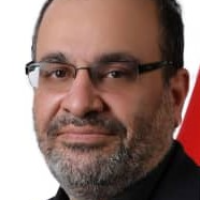Regional Differences in Cancer Incidence Trend in Tehran, Iran: A Contextual Study on the Effect of Socioeconomic Status at Regional Level
Author(s):
Article Type:
Research/Original Article (دارای رتبه معتبر)
Abstract:
Background
Cancer is a major public health concern all over the world. The aim of the current study is to demonstrate changing trends of cancer incidence from 2006 to 2009 in Tehran (capital city of Iran) and evaluate the effect of living in different regions according to their median socioeconomic status (SES) on cancer cumulative incidence.Methods
The incident cases were obtained from the population based cancer register of ministry of health and medicine in Iran; we examined the annual percent changes (APCs) and overall trends of total cancer incidence across regions in Tehran. The age and sex standardized incidence rates were computed by the direct method. Poisson regression and negative binominal regression model were used to assess the existence of trends across 4 consecutive years, as well as the effect of living in each region, literacy rate, and employment rate across regions on this trend. All the analyses were done by Stata 12.0 software.Results
The findings of this study showed downward and nonlinear trend during 4 years. The age-standardized incidence rate (ASR) was higher in men compared to women in this period. ASRs for overall 4 years were 114 and 101 per 10,0000 men and women, respectively. Average annual percent change based on ASR and regression model for each sex was the same and around -5% and -6%, respectively. Incidence rate also differed between districts so that north and center districts had higher incidence than southern parts in both sexes. The lowest rate ratio attributed to district 17 and 18 located in south of Tehran and the highest rate ratio attributed to district 6 for each sex compared to the baseline district 16. Results reported the sharp increase of 59% and 37% in district 6 compared to district 16 in men and women, respectively. Better regional social status increased the risk of cancer among women. Also, the results showed a partially significant interaction with higher decrease in annual trend of cancer rate in socially more deprived regions.Conclusions
The results showed downward and nonlinear decreasing trend during 4 years, especially in regions with lower socioeconomic status. Incidence rate also differed between districts so that northern regions had higher incidence than southern regions. Spatio-temporal Analysis of these cancer rates with adjustment for more regional socio-economic characteristics may better explain the disparities in rate of cancer in different districts across time.Keywords:
Language:
English
Published:
International Journal of Cancer Management, Volume:11 Issue: 1, Jan 2018
Page:
3
magiran.com/p1813953
دانلود و مطالعه متن این مقاله با یکی از روشهای زیر امکان پذیر است:
اشتراک شخصی
با عضویت و پرداخت آنلاین حق اشتراک یکساله به مبلغ 1,390,000ريال میتوانید 70 عنوان مطلب دانلود کنید!
اشتراک سازمانی
به کتابخانه دانشگاه یا محل کار خود پیشنهاد کنید تا اشتراک سازمانی این پایگاه را برای دسترسی نامحدود همه کاربران به متن مطالب تهیه نمایند!
توجه!
- حق عضویت دریافتی صرف حمایت از نشریات عضو و نگهداری، تکمیل و توسعه مگیران میشود.
- پرداخت حق اشتراک و دانلود مقالات اجازه بازنشر آن در سایر رسانههای چاپی و دیجیتال را به کاربر نمیدهد.
In order to view content subscription is required
Personal subscription
Subscribe magiran.com for 70 € euros via PayPal and download 70 articles during a year.
Organization subscription
Please contact us to subscribe your university or library for unlimited access!


